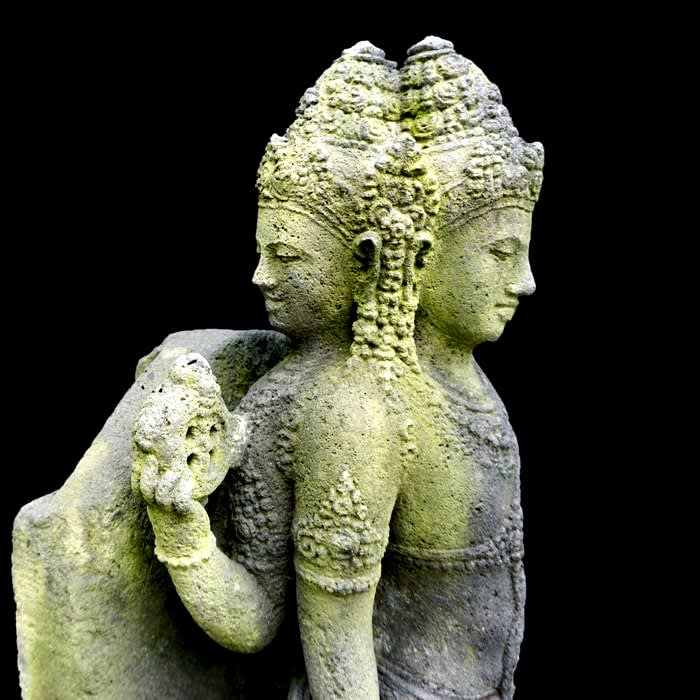Trimurti, 9th Century AD to 10th Century AD
Basalt
116 x 44 x 39 cm
45 5/8 x 17 3/8 x 15 3/8 in
45 5/8 x 17 3/8 x 15 3/8 in
KR.006
Further images
Trimurti, the word means ‘three forms’, is triad of the three gods Brahma, Vishnu, and Shiva in Hinduism. The trimurti combines the three gods into a single form with three...
Trimurti, the word means ‘three forms’, is triad of the three gods Brahma, Vishnu, and Shiva in Hinduism. The trimurti combines the three gods into a single form with three faces. Each god is in charge of one aspect of creation, with Brahma as creator, Vishnu as preserver, and Shiva as destroyer. Trimurti is considered the doctrine to be an attempt to reconcile different approaches to the divine with each other and with the philosophical doctrine of Brahman, the Ultimate Reality. The Trimurti is sometimes depicted as a three-headed figure. This symbolizes the Hindu belief that Brahma, Vishnu and Shiva are all aspects of one supreme being, Brahman.
This basalt sculpture assumed to have been enshrined at a 9th century Hindu temple in Indonesia, is a beautiful example of Trimurti with three heads and four arms on one body. This Trimurti statue features a serene face, a natural depiction of the body and attire, and an extremely exquisite detail. These characteristics are stylistically similar to sculptures from the Prambanan Temple, the largest Hindu temple of ancient Java, founded in the 9th century. The Trimurti wears decorated Javanese headdresses on three heads and the figures are richly jeweled. His body is sumptuously adorned with elaborate jewelry, including a tiered multi-strand necklace, pendanted arm bands, bracelets and anklets. The long loincloth is very simple but adorned by prominent beaded belts. Also, his four hands hold Lakçana (attributes or symbols) of Hindu deity: Dharmachakra (wheel), feather duster, water jar and orb. Trimurti stands on a lotus base decorated with elaborate relief. The pedestal supporting Trimurti and the lotus base features two monster figures. These monsters supporting the base emphasize the Trimurti’s sanctity, while showing their teeth with a horrific look to prevent evil spirits from invading.
This basalt sculpture assumed to have been enshrined at a 9th century Hindu temple in Indonesia, is a beautiful example of Trimurti with three heads and four arms on one body. This Trimurti statue features a serene face, a natural depiction of the body and attire, and an extremely exquisite detail. These characteristics are stylistically similar to sculptures from the Prambanan Temple, the largest Hindu temple of ancient Java, founded in the 9th century. The Trimurti wears decorated Javanese headdresses on three heads and the figures are richly jeweled. His body is sumptuously adorned with elaborate jewelry, including a tiered multi-strand necklace, pendanted arm bands, bracelets and anklets. The long loincloth is very simple but adorned by prominent beaded belts. Also, his four hands hold Lakçana (attributes or symbols) of Hindu deity: Dharmachakra (wheel), feather duster, water jar and orb. Trimurti stands on a lotus base decorated with elaborate relief. The pedestal supporting Trimurti and the lotus base features two monster figures. These monsters supporting the base emphasize the Trimurti’s sanctity, while showing their teeth with a horrific look to prevent evil spirits from invading.





